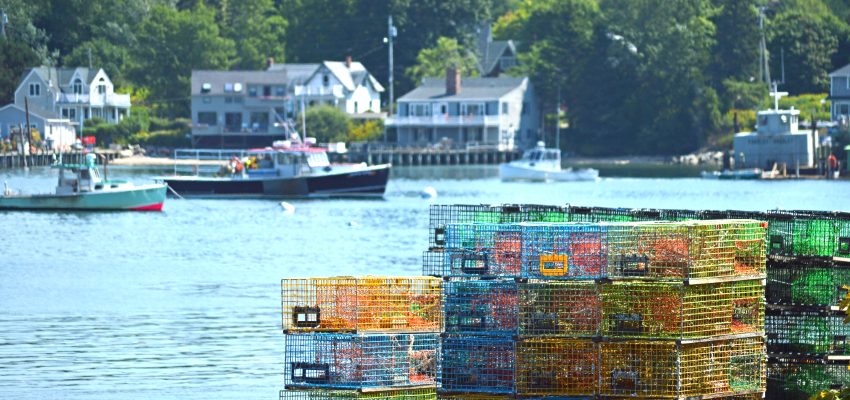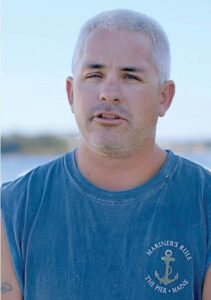
Sonny Beal, a third-generation lobsterman, explains how the ethic of conservation was ingrained in him from an early age by his father and outlines what lobster sustainability means to him and to the industry.
 Sonny lives in Beals Island, Maine, with his wife Abbi and two young sons Kaden and Damon. He serves on the Board of The Maine Lobster Marketing Collaborative and as President of the Beals-Jonesport Co-op.
Sonny lives in Beals Island, Maine, with his wife Abbi and two young sons Kaden and Damon. He serves on the Board of The Maine Lobster Marketing Collaborative and as President of the Beals-Jonesport Co-op.
Q&A with Sonny Beal:
What are some of the sustainability measures that Maine lobstermen employ and how did they start?
It started more than 100 years ago when guys started measuring their lobsters and only keeping the mature lobsters, leaving the juveniles to get bigger. Then, later on, it expanded to [1] “notching” egg-bearing females so that when they’re caught later, lobstermen will be able to identify them as breeders even if they’re not carrying eggs at the time.
How do you measure the lobsters? Why is it important to only keep lobsters of a certain length?
We measure the lobsters from the eye socket to the back of the carapace. We’re looking for lobsters that measure 3 1/4 to 5 inches. We put the younger ones back because they’re the future of the industry. The oversized lobsters, that tend to be 15-20 years old, are the future of the industry too. They are also put back to protect the large, healthy breeding stock. This is because the large females produce millions of eggs over their lifespan, and they only mate with lobsters of equal size.
Why is sustainability so important to the industry?
It’s our heritage, and that is very important to our industry. There aren’t many fisheries that have this level of sustainability.
It’s also about having a fishery to pass on to future generations. I want to be able to leave a fishery for my children and my children’s children. I believe that if you take care of a product, the product will take care of you.
The benefits of taking care of our stock are already showing. The population of lobsters has exploded and we’re experiencing record catches.
How do sustainability traditions get passed down?
Knowledge is handed down from older to younger fishermen. The older fishermen share it with you, it’s just one of the things you learn about lobstering, like checking the tides and where to set your traps.
Some of it is through family. This was the way my father taught me, and I’ve got two sons who started fishing with me as soon as they were able to put on a pair of boots.
We also have an apprentice program, which anyone above student age has to go through. Before you get your license, you have to apprentice under another lobsterman for several years and really learn how to fish.
The best thing about the sustainability measures we use is that fishermen started policing themselves. They were the ones that came up with the rules and petitioned the government. 80 to 90 percent of people’s income in my area comes from the lobster industry. So, protecting the lobsters is not just about sustaining the fishery but sustaining the community. It protects people and businesses alike.
[1] The ‘notched’ females are thrown back, which allows them to grow and reproduce in future years.


